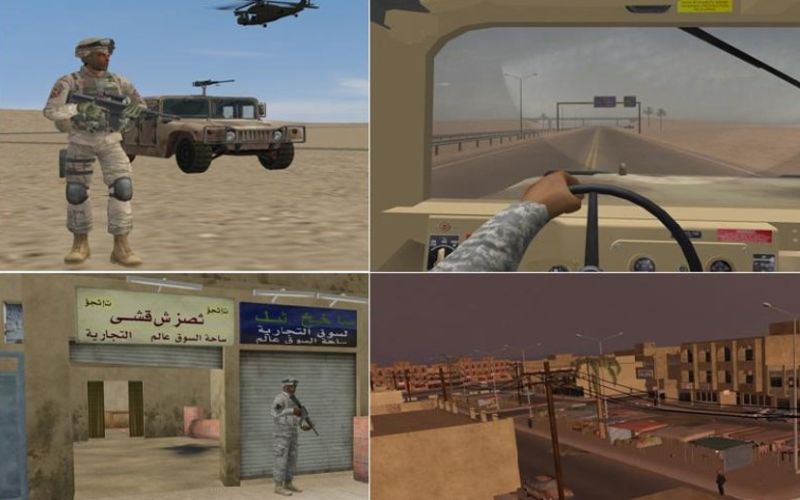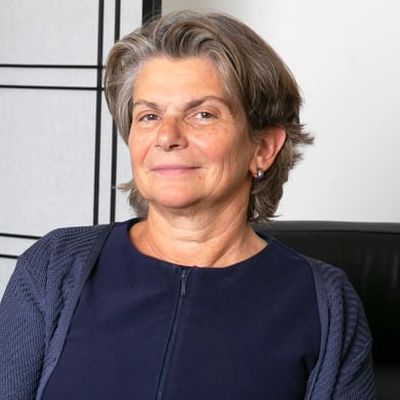Almost 8% of the global adult population experiences posttraumatic stress disorder (PTSD) over their lives resulting from traumatic experiences of war, sexual assault, interpersonal violence, and other physical and/or psychological disrupting events. Still the treatment options are limited.
JoAnn Difede, PhD, Director of the Program for Anxiety and Traumatic Stress Studies (PATSS) and Director of the Virtual Reality Lab at NewYork-Presbyterian/Weill Cornell Medicine, has made understanding and treating trauma her life’s work, starting with burn patients more than 30 years ago. She is a pioneer in virtual reality exposure therapy (VRE), which recreates the scenes of patients’ past trauma through life-like virtual worlds, allowing them to confront and process the experience in intensely realistic ways. VRE is now considered a first-line treatment for PTSD.
“We have efficacy data now with multiple types of trauma—terrorism, burns, various combat theaters, and other more routine traumas,” says Dr. Difede. “It's extraordinarily promising.”
Expanding the Field
Her recent work seeks to expand VRE’s usefulness by delving into factors that can enhance treatment on an individual basis. In a randomized control study of military personnel who were deployed to combat zones, published in Translational Psychiatry in 2022, Dr. Difede showed that using D-cycloserine (DCS), a cognitive enhancing medication, with VRE, and accounting for the presence of depression and specific genetic markers, influenced patient outcomes. This is one of the first studies to explore a personalized approach to PTSD treatment.

Images from VRE of Iraq and Afghanistan
The novel study found that VRE and traditional exposure therapy, which guides patients to imagine and recount their trauma, were equally effective in treating PTSD. However, VRE was more likely to benefit patients with co-morbid major depressive disorder while imaginal exposure was more effective for non-depressed patients. Dr. Difede and the other study authors speculate that the novelty of VR and being immersed in a virtual world may be especially engaging to individuals experiencing depression alongside PTSD.
We have efficacy data now with multiple types of trauma—terrorism, burns, various combat theaters, and other more routine traumas. It's extraordinarily promising.
— Dr. JoAnn Difede
Overall, the use of DCS had no significant effect on patients. But there were differences based on the presence of certain genetic markers. Dr. Difede and the study team focused on a variant of brain-derived neurotropic factor (BDNF), the Val66Met polymorphism. Previous research suggested it might explain some of the difference in trauma treatment outcomes. In fact, those who carried Val66Met polymorphism improved more on DCS than those without.
Other differences emerged for carriers of a genetic variant for the endocannabinoid-modifying enzyme, fatty acid amide hydrolase (FAAH), which studies show enhances fear extinction learning. These individuals improved more than non-carriers of the variant, particularly if they were also depressed. The study was cited by the Brain and Behavior Research Foundation as one of the most innovative papers of the year.
“It’s a small step toward differential therapeutics for patients,” says Dr. Difede. “It makes me wonder if we’ll be able to create genetic tests that would help us choose treatments sooner than we thought.”
A Legacy of Innovation
Dr. Difede’s groundbreaking research has its roots in the horrors of 9/11 and PTSD among first responders of the World Trade Center. “We started the project because we had a clinical problem to solve,” she says. “There was some evidence that what we now know as exposure therapy was an effective treatment, but there was no standard of care.”
We started the project because we had a clinical problem to solve. There was some evidence that what we now know as exposure therapy was an effective treatment, but there was no standard of care at that time.
— Dr. JoAnn Difede
At that point, Dr. Difede had already begun testing VR for pain management in burn patients together with colleagues at the University of Washington.
“We had no idea if it would work for trauma, but based on the principles of learning, we thought it might actually allow a survivor to process their memory more thoroughly,” she says. “Verbal therapies are just that—you're talking to people. But we apprehend the world in multisensory dimensions.”
The team began creating VR simulations that included the sights and sounds that 9/11 survivors experienced on that unforgettable day—from the brilliant blue sky to the smoldering rubble where the towers once stood. To Dr. Difede’s surprise, the treatment worked.
You learn that by processing and narrating your memories while you are in that immersed world, you can tolerate the fear and anxiety. Almost at a pre-conscious level, we’re helping a person’s brain reset.
— Dr. JoAnn Difede
“The first study showed that for people who had difficulties engaging in the verbal therapies involving exposure therapy, putting that person in an immersive VR environment was an effective way to go,” says Dr. Difede. “You learn that by processing and narrating your memories while you are in that immersed world, you can tolerate the fear and anxiety. Almost at a pre-conscious level, we’re helping a person’s brain reset.”
Investigating New Factors
From there, Dr. Difede’s team began exploring the use of DCS to enhance the therapy. “A study showed that if you gave patients who had phobias, such as a fear of heights, DCS at the time of treatment in an immersive virtual reality world, they got better faster,” she says.
Her next study combined the use of the DCS medication with VR for World Trade Center survivors. “We had something like a 90% remission rate,” Dr. Difede says. “It was the first time I had patients who said they had thought they would improve, but they actually felt completely better.”
Dr. Difede next collaborated with a group of researchers around the country on a $15 million, multicenter study comparing VRE with the traditional form of exposure therapy in combat veterans.
At the same time, work that involved testing a mouse model of BDNF, led by Francis S. Lee, MD, PhD, now Psychiatrist-in-Chief at New York-Presbyterian/Weill Cornell Medicine, also informed Dr. Difede’s research. His study showed that a subgroup of mice that have the BDNF Val66Met polymorphism don’t habituate to fear, she says. These findings provided a key variable for her subsequent 2022 study in humans.
The COVID Aftermath
The COVID-19 pandemic presented new challenges. Dr. Difede’s work is now focused on healthcare workers still struggling to deal with trauma brought on by the suffering and death they witnessed on the front lines of the pandemic.
“We’re taking everything we’ve learned and applying it to our colleagues in health care, particularly people who worked in densely populated areas, like us in New York City, where the risk was all around, not just at work,” says Dr. Difede.
These efforts are aided by technological advances in VR, from sleeker headsets to software that allows the therapist to take pictures of healthcare workers and create their own personalized avatars. That allows them to see themselves in the hospital setting, such as an overcrowded ICU amidst the sounds of ventilators.
“We’re starting to use it not just for PTSD, but for moral injury,” says Dr. Difede. “A lot of our people who worked in healthcare feel like they let their patients down. They were working long hours and had to triage who got treatment and who didn’t.”
“Moral injury is not a psychiatric disorder,” she continues, “yet it is a very troubling state of being, where people feel very guilty and ashamed of what they did and didn’t do. And it often co-occurs with PTSD to the point that it’s hard to separate the two.”
There's nothing quite like the feeling of having someone say, ‘Hey, doc, I got my life back.’ I didn't expect that. That human connection and seeing people heal and restored to a better level of functioning, not suffering as much, or in some cases not suffering at all anymore—that's priceless.
— Dr. JoAnn Difede
In her current study, Dr. Difede is stitching the avatars of healthcare workers into pandemic hospital scenarios. “But instead of embodying the avatar, you're actually watching yourself do what you did,” she says. “The research question is, if you see yourself and see what you experienced from a third person perspective, will it allow you to come to terms with it, such as creating a narrative where you come to understand that you did everything you could do?’”
Technology is also enabling Dr. Difede’s team to roll the treatment out remotely. “We're now retooling the healthcare worker environments that we just created with some generous foundation funding and funding from private donors to develop the prototype so the patient can be there, and I can be here,” she says. “They’re in the headset, but I can see on my screen what they’re seeing, and I can walk them through the treatment.”
Dr. Difede shows no signs of slowing down her efforts to relieve the persistent trauma that disrupts people’s lives. While her data have consistently validated her work, she says the biggest rewards come from patients themselves.
“There's nothing quite like the feeling of having someone say, ‘Hey, doc, I got my life back.’ I didn't expect that,” says Dr. Difede. “That human connection and seeing people heal and restored to a better level of functioning, not suffering as much, or in some cases not suffering at all anymore—that's priceless.”




